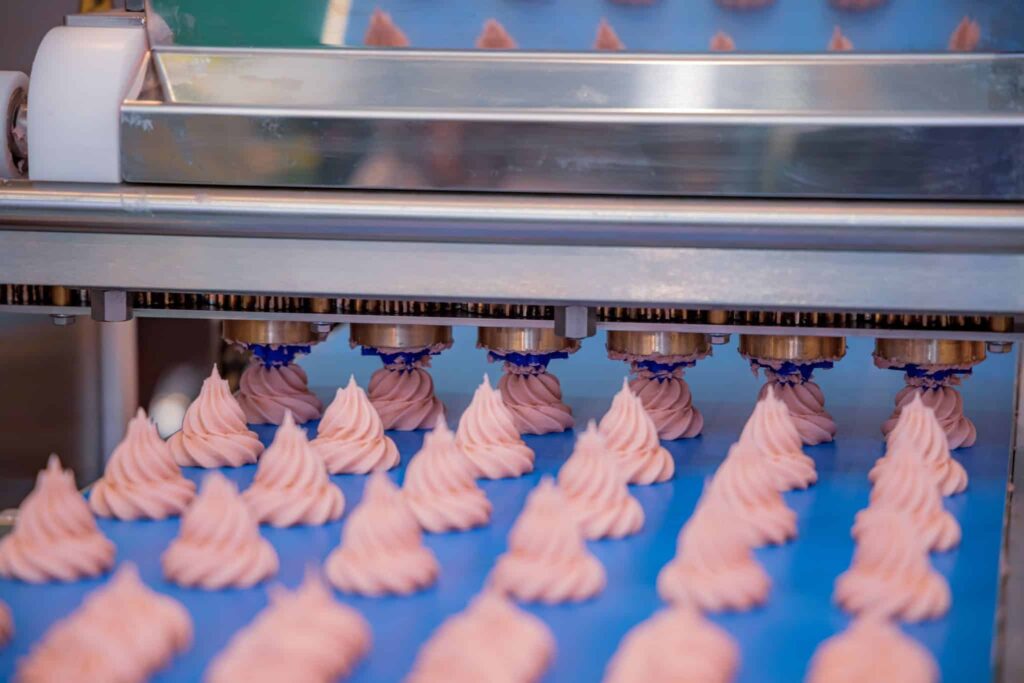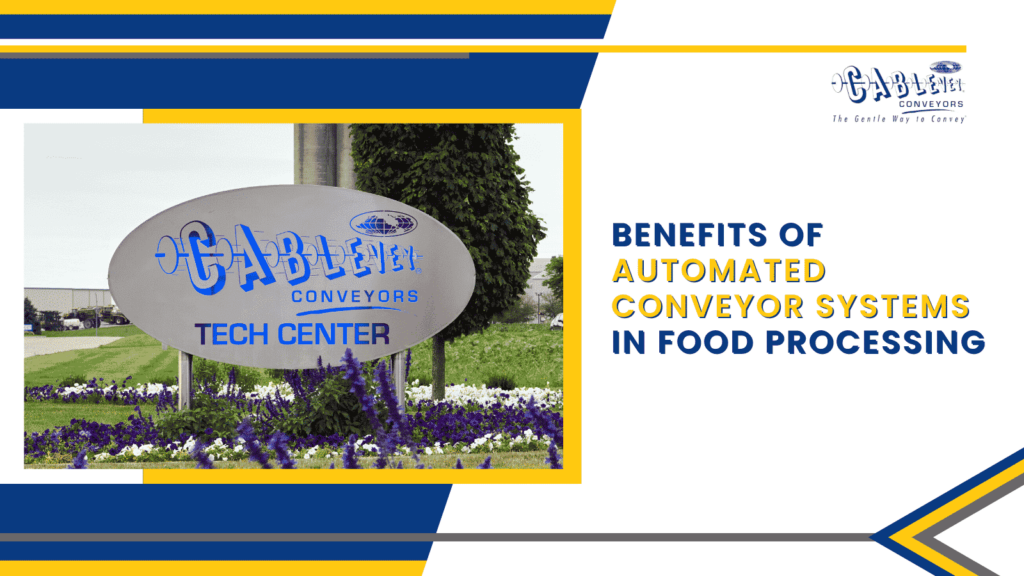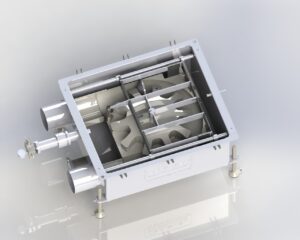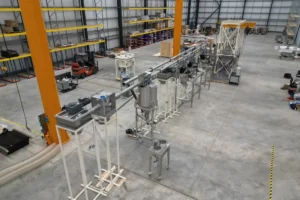In an era where automation is reshaping industries, the role of top-notch industrial conveyor systems has become indispensable in modern material handling. Explore all the benefits of automated conveyor systems in food processing and discover how tubular conveyor systems are revolutionizing the industry landscape, propelling it into a new era of growth and innovation.
What Are the Benefits of Automated Conveyor Systems in Food Processing?
The use of automated conveyor systems in food processing offers a myriad of benefits, transforming the industry. These systems, like those provided by Cablevey Conveyors, enhance workplace safety by reducing the risk of injuries associated with manual labor. They improve food safety through contamination prevention and quick response to recalls.
Moreover, these conveyor technologies contribute to consistent product quality, increased efficiency, and substantial cost savings by streamlining production processes. The integration of technologies like a tubular conveying system ensures a reliable and efficient solution, making automation a key driver in elevating the standards of food processing.
Evolution of Food Processing Automation
Factory automation has become commonplace in many industries, and the food industry is no different. An automated conveyor system is now considered a necessity in most modern food processing plants. The main reasons for this are the numerous advantages compared to traditional manual labor. The most significant of them are increased efficiency and productivity, improved safety, and reduced costs. To fully understand what automation brings to the table, we need first to look at how things used to be done.

Food Processing in the Past and Its Challenges
Historically, the food processing industry was very labor-intensive. Every task was done by hand, from raw ingredient storage and handling to packaging and product shipping. It didn’t matter if the raw materials were agricultural or meat products. They had to be moved manually from one place to another by workers.
This was extremely inefficient, but it also posed a serious safety risk to workers who constantly had to lift and move heavy objects. Injuries were common, and worker turnover was high. Food safety was another major concern in food processing plants that relied on manual labor. There was always the risk of contamination since there was no way to sanitize workers’ hands after every task effectively.
Moreover, since food products were often handled directly with bare hands, the potential for cross-contamination was very high. Finally, since food handling was entirely manual, it was also very slow. This often led to production bottlenecks and delays, which could cause the finished product to spoil before it reached the consumer.
The Advent of Automated Conveyor Manufacturing
The problems mentioned above were addressed with the introduction of automation in food processing plants. Automation can be defined as the use of machines to carry out tasks that would otherwise be performed by human workers. In food processing, automation includes various equipment and technologies such as conveyor belt systems, robotics, and computer-controlled systems. Some of the tasks that can be fully automated are:
- Raw ingredient storage and handling,
- Cooking,
- Packaging,
- Product shipping.
Of course, one of the most significant steps in food processing automation is the installation of these systems. They are used to move food products from one stage of production to the next. That’s why they can be horizontal, vertical, or anywhere in between, and they can be customized to fit the specific needs of each food processing plant. Automated conveyor systems have numerous advantages over manual labor in food processing.

Explore the Main Benefits of Automatic Conveyor System
According to PR News Wire, the food processing market is expected to grow to $4.1 trillion by 2024, at a CAGR of 4.3% from 2019 to 2024. A large part of this growth can be attributed to the increasing adoption of artificial intelligence and process automation in food processing plants worldwide. Technology is rapidly changing the food processing landscape, and automated conveyor systems are at the forefront of this transformation.
There are many reasons why automated conveyors are becoming more popular in food processing plants. Here are the most significant benefits:
#1 Safer Work Environment
Whenever there are workers involved in a task, there is always the risk of injuries. This is especially true in food processing, where workers regularly operate with heavy machinery and handle sharp objects. Installing automated conveyor systems eliminates the need for workers to be close to dangerous equipment. It also reduces the number of manual tasks that need to be performed, which further decreases the risk of injuries.
Automation encourages an error-free work environment by providing consistency. Consistent production ensures there is no rushing to meet a deadline or skipping crucial steps that could lead to accidents. Workers don’t need to improvise or take shortcuts when everything is done by the machine.
#2 Improved Food Safety
Since an automated belt conveyor system doesn’t require workers to handle food directly, there is less chance of contamination. In addition, automated conveyors can be equipped with sensors that detect foreign objects and remove them from conveyed materials before they reach the next stage of production.
In the case of a product recall, automation can help food processors quickly and easily identify the affected products and remove them from the production line. This is a significant advantage over manual labor, where such recalls can be very costly and time-consuming. Not only that, but automated controls can also precisely identify where and why a problem occurred so that it can be fixed quickly and prevent future product contamination.
#3 Better Product Quality
Relying on manual labor can lead to unpredictable results. For example, if a worker is having a bad day or is rushed to finish a task, the quality of their work can suffer. This can result in inconsistency and subpar products that don’t meet the required standards.
Automated conveyor systems are designed to follow the same path and perform the same tasks every time they are used. This leads to a consistent product that meets all quality standards. Automation is key to achieving the repeatability and reliability that food processors need.
#4 Increased Efficiency and Productivity
One of the most significant advantages of automated conveyor systems, provided by reputable belt conveyor manufacturers, is their ability to increase efficiency and productivity. When workers are handling tasks manually, there is always the potential for human error. This can lead to wasted material, lost time, and decreased productivity.
The most obvious benefit of smart conveying systems is the increase in efficiency they provide. Since conveyors can move much faster than human workers, they can significantly increase the speed of food production. Production capacity can be increased without hiring more workers or working them for longer hours.
Furthermore, conveyors (and most other conveyor engineering systems) can operate almost 24 hours, seven days a week. This means that food processors can make the most of their production facilities and get the most out of their investment.
#5 Cost Savings
Investing in an automated conveying system may seem like a significant upfront cost. Indeed, numerous decision-makers are hesitant to make such a large investment without knowing for sure that it will pay off in the long run. However, the truth is that automated conveyor systems can offer significant cost savings in the long term.
Automated conveyor systems may have a higher initial cost than manual labor, but they are designed to last for many years. This means that food processors can save money on labor costs and maintenance fees in the long term.
#6 Automated Cleaning and Maintenance
An often overlooked advantage of automation, particularly in the realm of cleaning conveyor belts, is that it can help with cleaning and maintenance tasks. Cleaning a production line is a time-consuming and costly task. Automated conveyor systems can help reduce the amount of time and effort required for cleaning.
Many automated conveyors are equipped with clean-in-place (CIP) systems. These systems allow conveyors to be cleaned quickly and easily without the need to disassemble them. This can save food processors a significant amount of time and money.
In addition, some automated conveyors come with predictive maintenance features. These features can help food processors avoid production downtime by identifying potential problems before they occur. By automating most cleaning and maintenance tasks, you can expect to see a significant reduction in your overall operating costs.
Automated Manufacturing Conveyor Systems Are the Future
Like the conveyor belt system before it, the innovative tubular drag system is an integral part of many industries today, including the food processing industry. Automated conveyor systems offer numerous advantages over manual labor, including increased efficiency and productivity, improved workplace safety, and cost savings.
When choosing an automated conveyor system from reputable conveyor systems manufacturers, it is important to consider the specific needs of your food processing facility. Purchasing an automated conveyor system is a significant investment. However, the long-term benefits of automation are clear. Automated conveyor systems can help food processors save time and money and improve the quality of their products.If you’d like to learn more about automated conveyor systems, look no further than Cablevey Conveyors. Contact us, and we’ll discuss the specific needs of your food processing facility and recommend the best conveyor system for your business.






